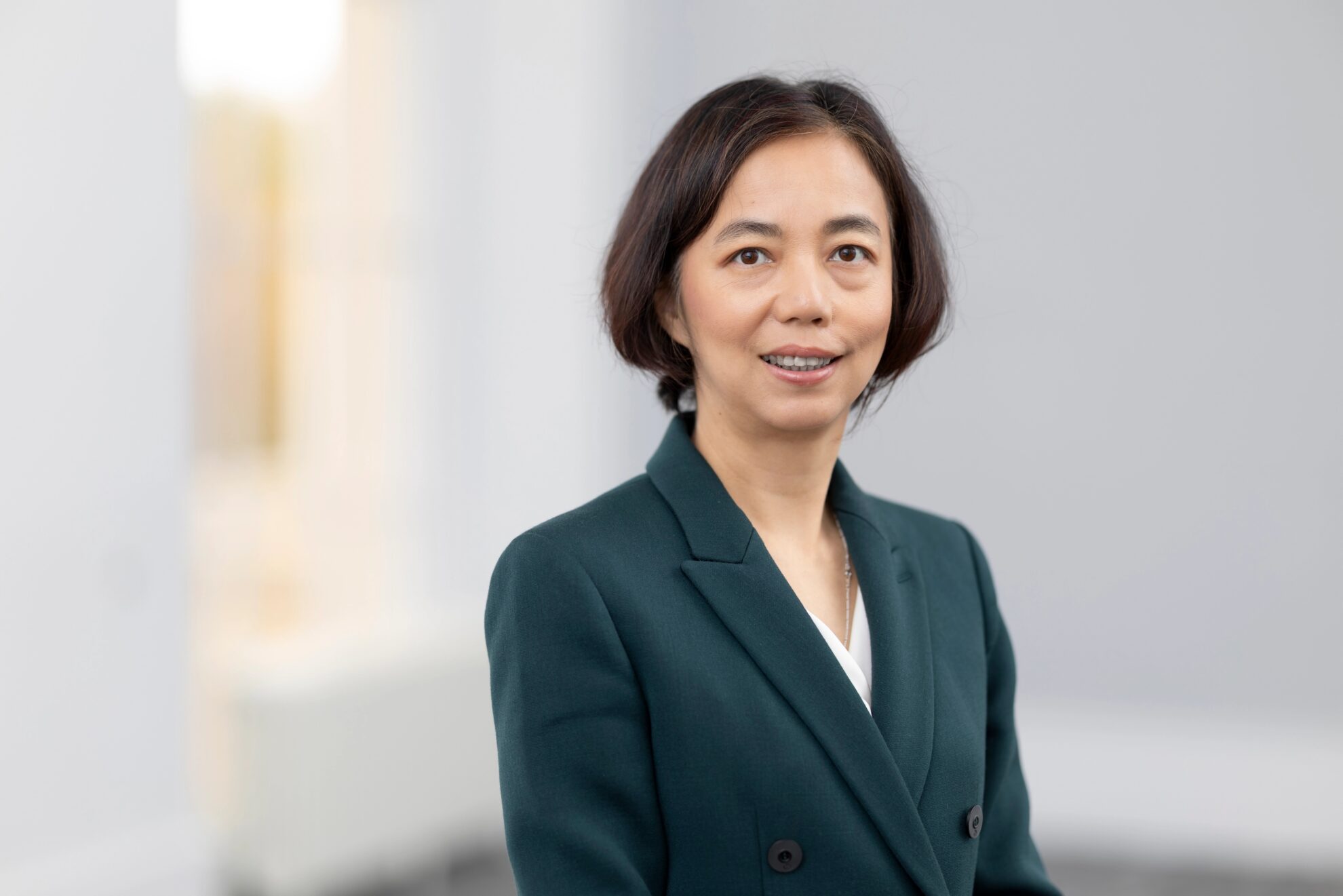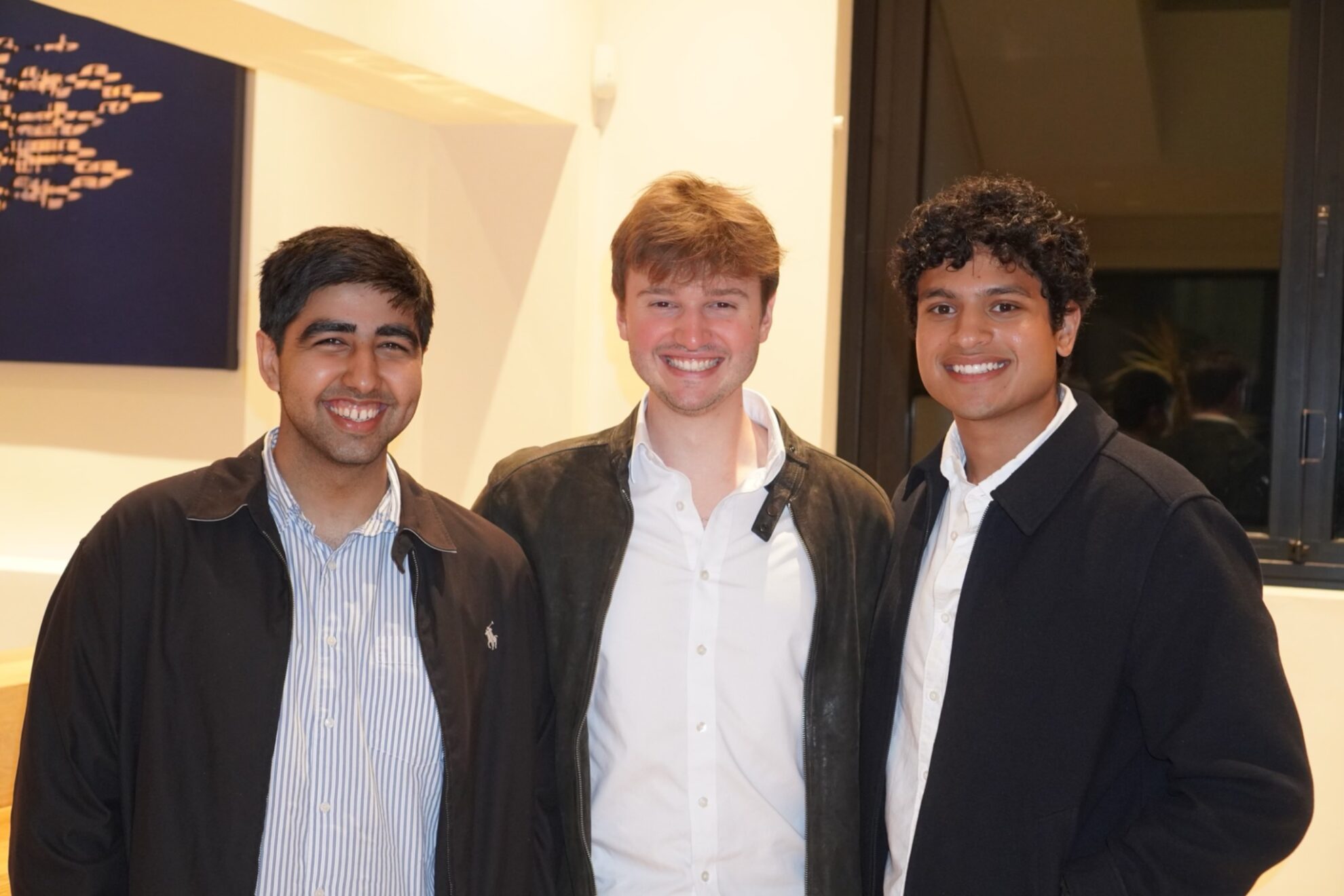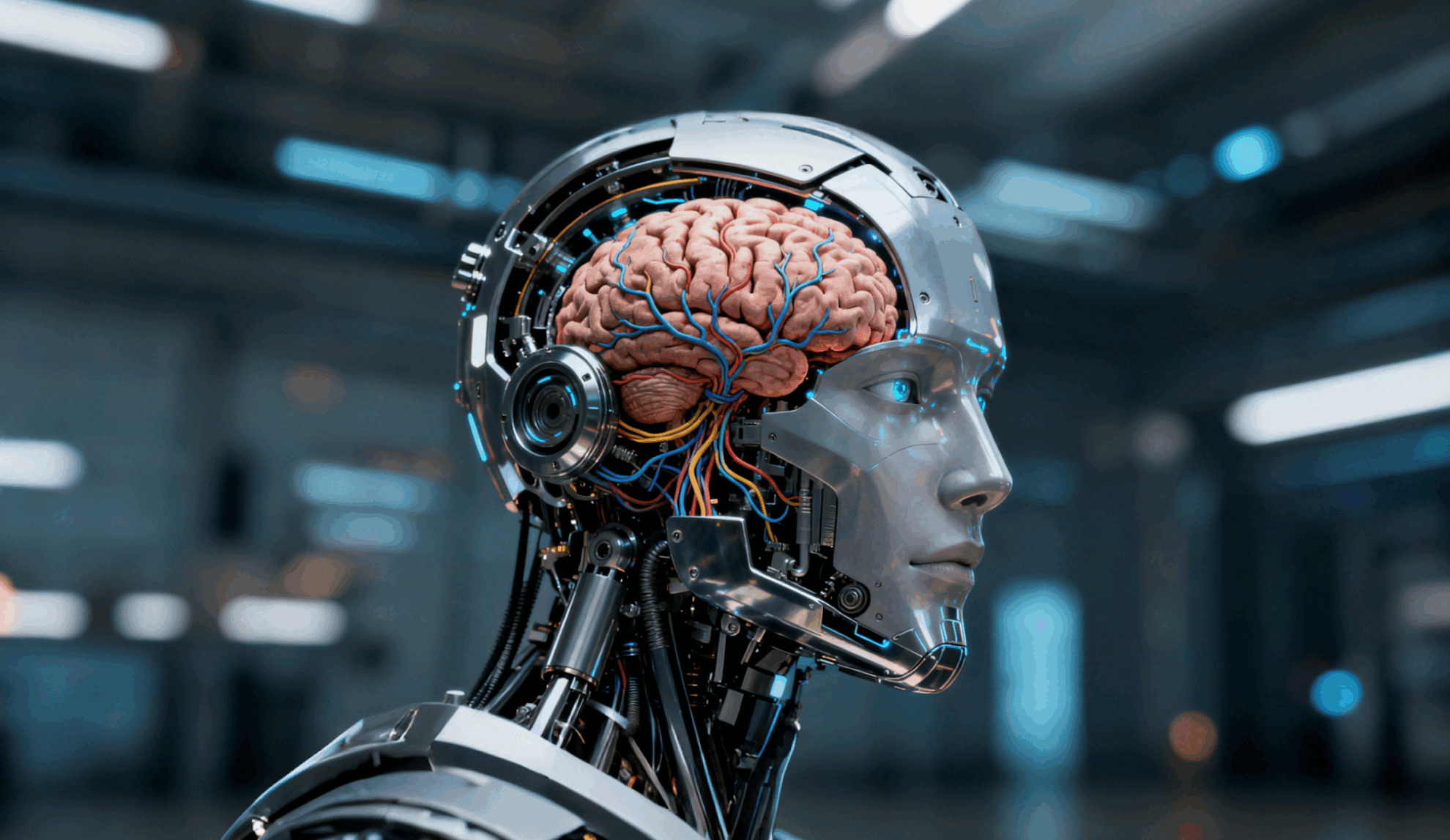Command Palette
Search for a command to run...
Virtual Idols Debut, Fan Economy Driven by Technology "star Creation"
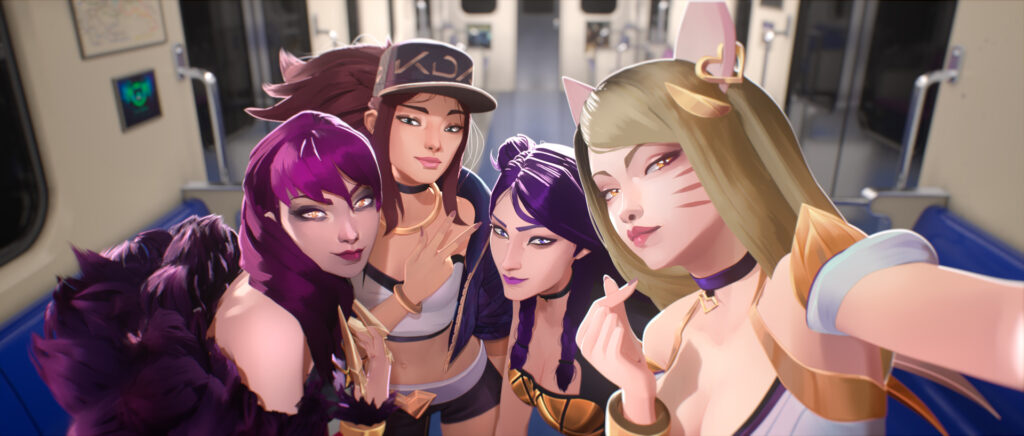
The virtual idol industry started not too late, with the first virtual idol being created as early as the 1980s and 1990s. However, with the rapid development and popularization of artificial intelligence technology in recent years, the virtual idol industry has truly ushered in an explosive period, with many virtual idols breaking through the dimensional wall and entering the three-dimensional world, becoming a new phenomenon in the field of entertainment.
In recent years, star talent shows such as "Idol Producer" and "Produce 101" have brought a group of young people such as Cai Xukun, Yang Chaoyue, and Meng Meiqi to the stage.
In just a few months, if the agency cooperates with the media and platforms and operates properly, they can shape them into popular stars sought after by millions of fans. Endorsements, commercial performances, and film contracts continue to flow in, and their value soars.
These "star-making events" can even generate hundreds of millions of dollars in commercial value in the short term, and their social impact is also increasing day by day.
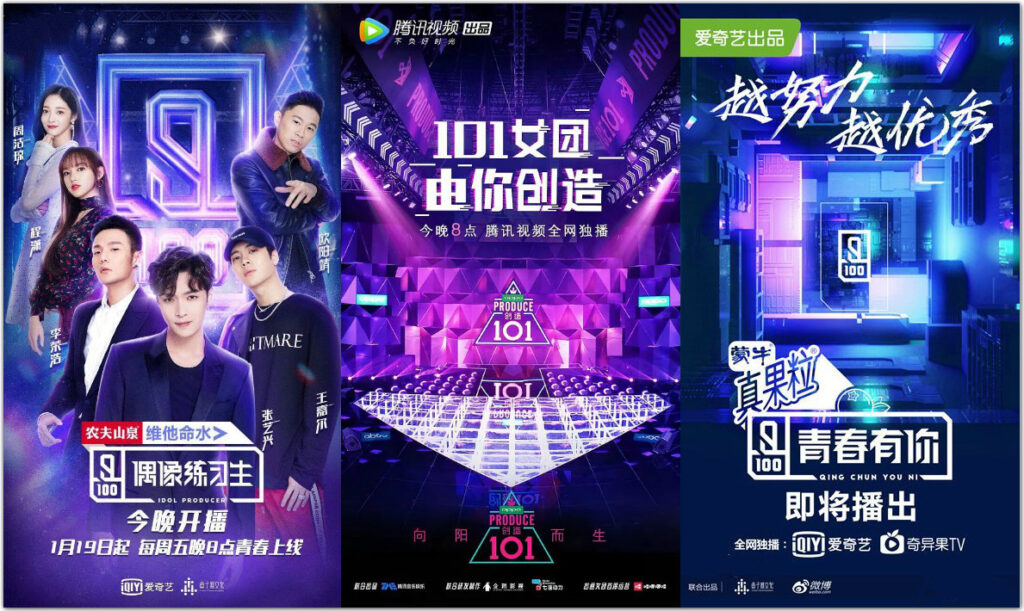
Since the program is mainly aimed at the young people's market, the program team also noticed the rapidly emerging two-dimensional market and tried to introduce two-dimensional virtual idols into the program.
In CCTV's latest talent show "Go Online! Colorful Boys",There is a virtual player named "Ling" created by AI participating in the competition.

The addition of AI contestants has given viewers more expectations for this show. Can virtual idols powered by AI technology have the same influence as real stars?
Breaking the dimensional wall, AI girl joins the talent show battle
Phoenix eyes, willow-shaped eyebrows, oval face, bun hair, and retro clothing, this virtual idol Ling created with AI technology has strong Chinese characteristics in both appearance and clothing. Her name comes from the "Ling" in Peking Opera. Her hobbies are Peking Opera, brush calligraphy, and Tai Chi.
The reason why Ling combines many traditional Chinese elements in one is that from the very beginning, Ling's production team hoped to use the power of technology to promote China's traditional culture.
Since announcing her debut in May, Ling has opened a personal Weibo account and posts some daily life every now and then.
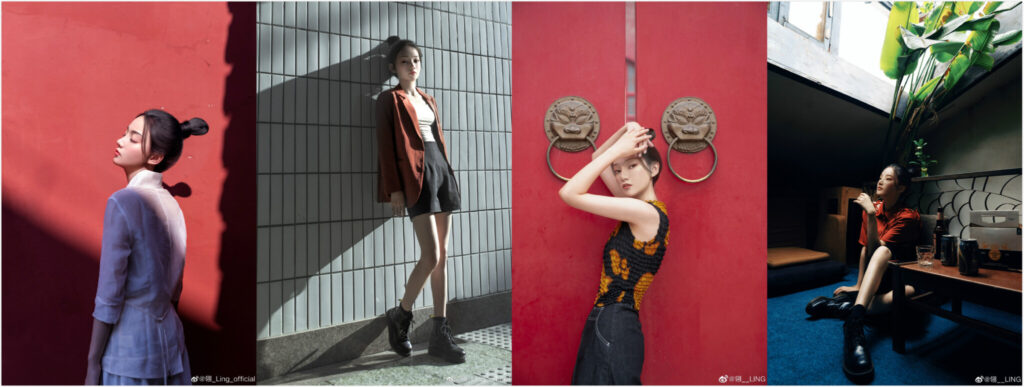
Judging from the updates posted by Ling, she has a rich daily life. She likes to pose and post beautiful photos. Her life is colorful, just like a real internet celebrity.
Not only that, she also joined the reality show team.
In the promotional video of "Go Online! Colorful Boys", Ling's expression is natural and vivid, and the facial details are very realistic after being magnified. Every hair and even the lip lines are clearly visible.
With the full use of computer technology, Ling's character image is very full
The ability to create such realistic virtual images is also thanks to increasingly powerful AI technology.
AI perception and synthesis technology to create virtual idols
According to Ling's production company Mofa Technology,The necessary condition for creating virtual digital humans is comprehensive AI perception and synthesis technology.
In order to make it show the same expressions and demeanor as real humans, the team used full-stack end-to-end AI performance animation technology:
Through the performance of real actors, the facial expressions, eyes, body movements, finger movements, etc. of the actors are captured in real time and driven to the 3D virtual characters in real time.Generate high-quality performance animation effects.
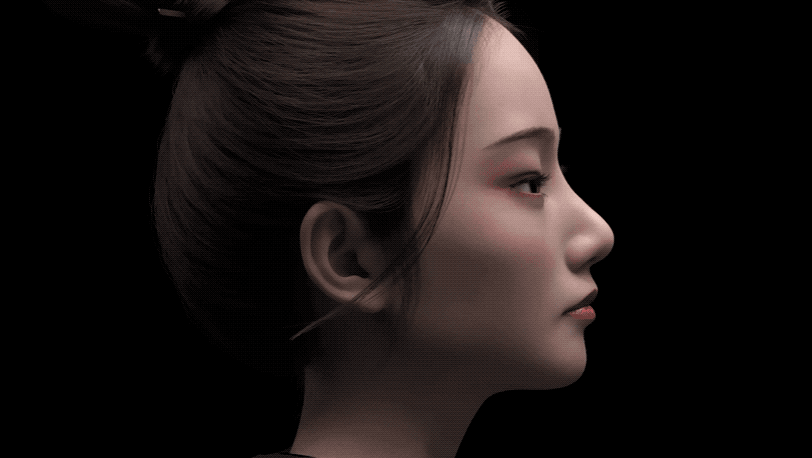
Unlike some of the earliest virtual characters, Ling's voice is not simply dubbed.Instead, it is based on real-time TTSA (Text to Speech and Animation) technology and deep learning technology.The voice and animation data of virtual digital humans can be automatically generated in real time based on text.
In addition, technologies such as speech recognition, semantic understanding, and facial expression/body motion recognition have also added the ability of emotional perception and interaction to virtual digital human feathers.
Therefore, behind Ling,ActuallyA series of technologies including intelligent scanning, modeling and binding, animation, solving and rendering of hyper-realistic digital humans.
It is precisely relying on these artificial intelligence technologies that the paper people in the two-dimensional world have begun to become three-dimensional, and their marketing value has been further enhanced.
The new generation of virtual idols have broken through the limitations of traditional virtual characters' dull expressions and stiff movements. They not only have appearances, movements and expressions that are infinitely close to real humans, but also have interactive capabilities, which gives them broader commercial application scenarios.
More than just singing and dancing, the virtual idol market has huge potential
In fact, before Ling, virtual idols had already entered the business world and people's lives. On foreign social media, there are already many virtual idols and virtual KOLs that have received attention.
Japan's Hatsune Miku: The perfect idol for otakus
When it comes to the precedent of virtual idols, Hatsune Miku must have a name.
Hatsune Miku was born in 2007, and it has been 13 years since then. She debuted as a virtual singer and has become well-known all over the world.

According to Hiroyuki Ito, the father of Hatsune Miku, their original purpose was to turn human singing into a virtual musical instrument.The VOCALOID (electronic music speech synthesis software) technology developed by Yamaha was used, and the voice of Japanese voice actor Fujita Saki was recorded as the sound source, and finally given a virtual image, and Hatsune Miku was born.
After her debut, Hatsune Miku attracted a large number of electronic music fans and led a wave of electronic music creation. Hatsune Miku's rapid popularity exceeded the production team's expectations.
Soon, she began to hold concerts around the world.He also became the world's first virtual idol to hold a concert using holographic projection technology.

Currently, Hatsune Miku has over 100 million fans worldwide, and the total number of fans on various social platforms in China alone is close to 10 million.
According to the Nikkei report,Hatsune Miku drove a consumer market of more than 10 billion yen (about 632 million yuan) from 2007 to 2012. By 2017, it had created a market of 10 billion yen in just one year.At the same time, she is also doing well in the domestic business sector.
In June this year, Hatsune Miku, who has accumulated a large fan base, entered the Taobao live broadcast room and started the road of live streaming sales.
In less than half a day, her popularity exceeded 2.7 million.In the 618 celebrity rankings, Hatsune Miku surpassed top stars such as Wang Yibo and Zhu Yilong to top the list. Her successful first attempt also made people realize that virtual idol live streaming may become the next hot spot.
Lil Miquela: A fashion icon loved by young people
In the United States, the birthplace of the internet celebrity economy, virtual idols have long joined the ranks of fashion internet celebrity bloggers.
Take Lil Miquela for example, she made her debut on Instagram on April 23, 2016, with her first post.

Lil Miquela's image combines the signature elements of a teenage fashion idol and an Instagram influencer: tanned skin, freckles, the iconic Nezha hairstyle, and the most fashionable street style outfits. This computer-generated virtual influencer is beautiful, fashionable, and a little mysterious, and is deeply loved by young people.
In August 2017, Lil Miquela released her first single "Not Mine", which reached No. 8 on Spotify's popular chart that month. At the same time, the MV in which she "participated" was featured on a billboard in Times Square.
Not long after her debut, she soon took on multiple roles, including singer, actor, model, internet celebrity blogger, etc., and her influence rose rapidly.In 2018, she was named one of Time magazine's "Most Influential People Online" of the year.
She continued to receive advertising invitations from fashion brands, appeared in fashion magazines, and was invited by Prada to "appear" in the form of a photo at the 2018 Fall/Winter Milan Fashion Week.
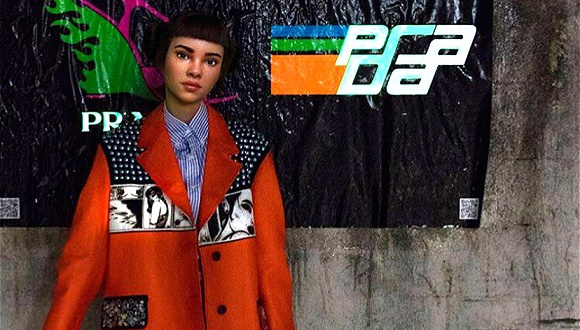
As of the end of October this year,Lil Miquela has over 2.1 million followers on Instagram and has accumulated over 2.8 million followers.
The key to Lil Miquela's ability to attract so many fans is not just her appearance, songs, etc., but the fact that she is endowed with "human" emotions and consciousness. She not only leads in aesthetics and consumption, but is also keen on expressing her views on public events on social media, covering topics such as racial equality, feminism, and gun control.
A fan of Lil Miquela said, "I don't mind that Miquela is fake at all. I look at her just like I look at other bloggers, they are all the same and you can't see them in real life. So as long as she can produce real enough content, it's fine."
China's virtual idols: a product driven by technology and culture
In China, with the spread of ACG culture and the rapid development of artificial intelligence technology, a wave of virtual idols with their own characteristics have emerged. From Luo Tianyi, who debuted earlier, to Microsoft Xiaobing, B Station Lingyuan Yousa, Xiaomi's Xiao Ai, etc., which have emerged in recent years, they are gradually moving from the "ACG" to the "CAG" world, attracting more attention.
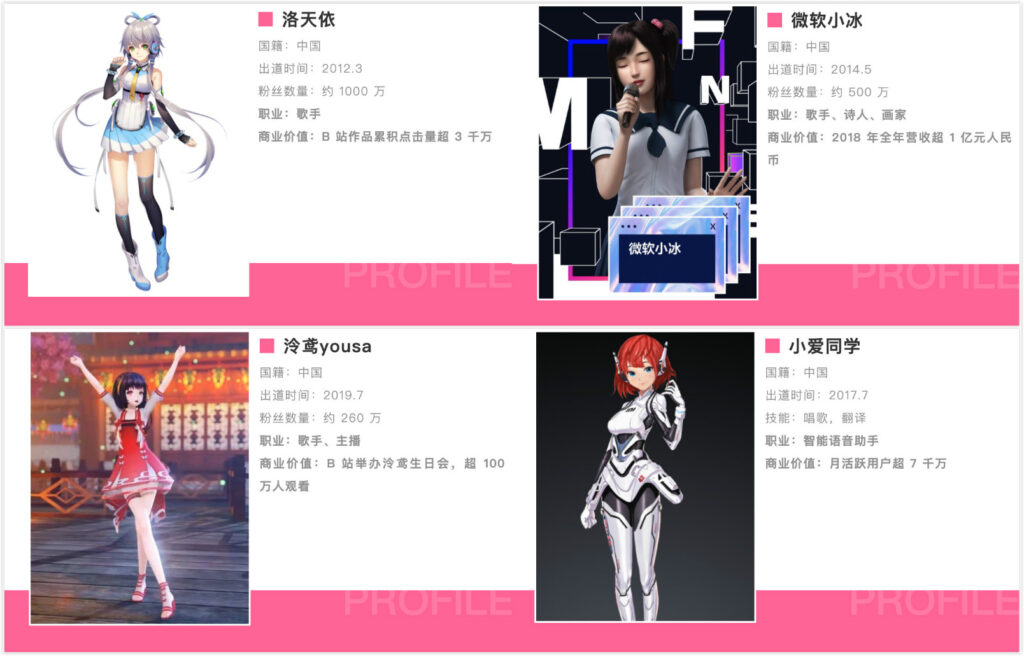
Take Luo Tianyi as an example. She is from Shanghai Henian Information Technology Co., Ltd.Developed based on VOCALOID3 developed by Yamaha, it is the world's first VOCALOID3 Chinese virtual idol.
Luo Tianyi made her debut on March 22, 2012. Since her debut, she has gained nearly 10 million fans, endorsed many brands, and performed on the same stage with famous singers and musicians many times.
Like Hatsune Miku, Luo Tianyi is not satisfied with her single career as a singer and actively seeks new career opportunities.
On May 1, 2020, she entered the Taobao live broadcast room for the first time and began to test the waters for selling goods.After the launch, the number of online viewers of the live broadcast reached 2.7 million, and nearly 2 million people gave rewards and interacted.
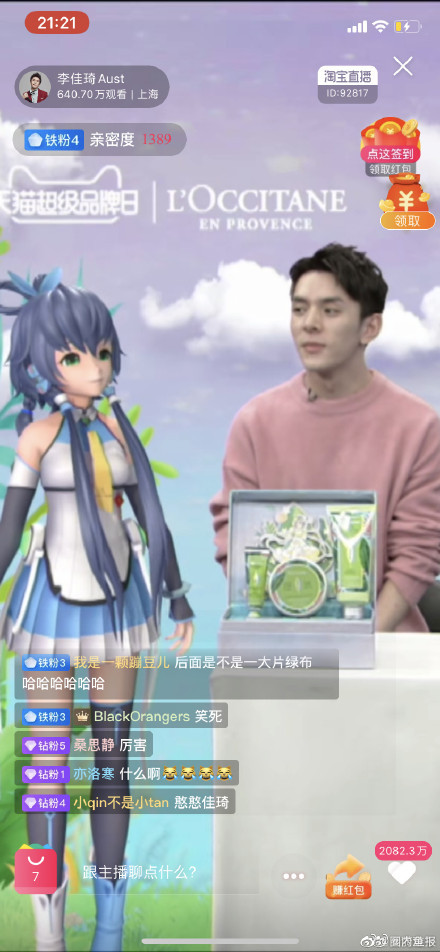
Will virtual idols become the big winners in the business world?
At present, virtual idols have become the new trend.
Driven by artificial intelligence technology,The functions of virtual idols are becoming more and more diverse, and they can reach more people through various channels, and their marketing value is increasing.
In addition to the brand endorsements and live streaming mentioned above, virtual idols are constantly exploring more career development directions. Previously, virtual AI anchors have entered the news broadcast room and can quantitatively produce news broadcast videos (seeThe world's first 3D AI synthetic anchor takes office and will report news on the two sessions.).
In the future, combined with AR/VR technology, the marketing form of virtual idols will be full of imagination, and they will appear in film and television, games, smart homes, etc.
Tireless, free of bad habits, no dark history, strong plasticity, and high tolerance for mistakes, these unique advantages of virtual idols allow them to break through the limitations of real idols.The number of fans even exceeds that of some popular stars.
In the future, the advantages brought by these technologies will help virtual idols embark on a broader business journey. If the technical threshold is further lowered, virtual idols, a new generation of traffic stars, may be mass-produced and usher in a large-scale explosion.
-- over--

